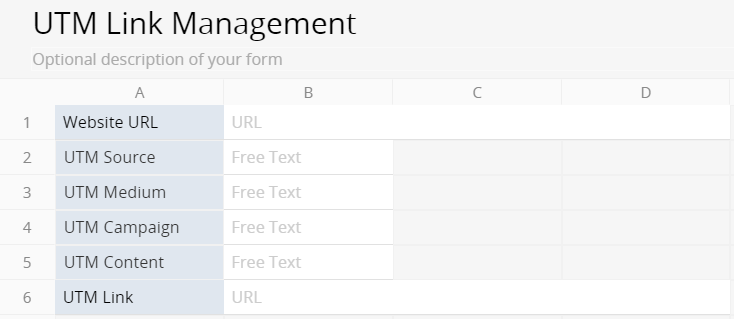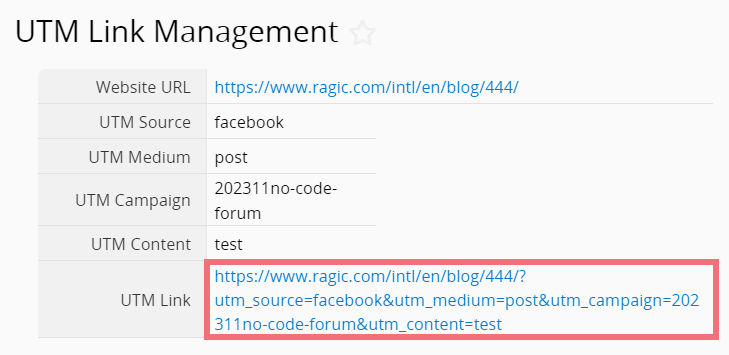If you are a marketing professional seeking to enhance the visibility of your company's website, event pages, and product pages, you typically promote them through various marketing channels. However, how do you determine which channel is the most effective and generates the highest traffic? Adding UTM parameters to your URLs to create UTM links can make performance tracking so much easier.
To create UTM links, the Google Analytics Campaign URL Builder is a common way to use. If you also want to record which links have been shared for performance tracking, you can create a Ragic sheet, and use formulas to generate and manage UTM links. Here are the steps:
1. Start by creating a “UTM Link Management” sheet and add fields such as Website URL, UTM Source, UTM Medium, UTM Campaign, UTM Content, and UTM Link. Please ensure the field types of “Website URL” and “UTM Link” are set to “URL.”
?? If you are uncertain about the meaning of UTM parameters like source, medium, campaign, and content, please refer to this article.

2. Since we would like to combine the URL of the Website URL with other parameter fields in the "UTM Link" field, enter the following formula A1+'?utm_source='+A2+'&utm_medium='+A3+'&utm_campaign='+A4+'&utm_content='+A5 into the formula tab in the Field Settings menu on the left, and then save the sheet design.

3. After the sheet is saved, you can enter the URL and UTM parameters in the corresponding fields as needed. The "UTM Link" field will automatically generate a link containing marketing parameters. You can share the generated UTM links on the respective platforms and track the traffic from each platform with Google Analytics.

4. On the listing page, you can easily view different traffic sources, mediums, campaign names, and campaign content for each UTM link. You can also add fields to record the performance of each channel. Additionally, you can create a separate sheet specifically for managing marketing campaigns, and link it to the UTM Campaign field using link and load feature to track the performance of each marketing campaign.

 Thank you for your valuable feedback!
Thank you for your valuable feedback!